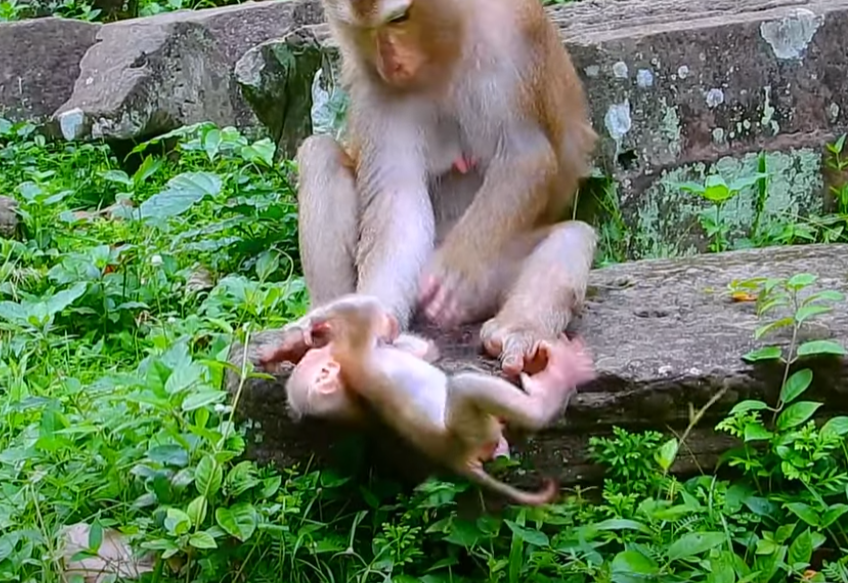I still remember the first rays of morning slipping through those centuries-old stone pillars of Angkor Wat forest, as mist curled around ancient carvings. I was there at dawn, heart pounding, when I heard it—a tiny, plaintive cry echoing through the jungle canopy. I followed the sound and discovered the most tender scene: a baby monkey, barely big enough to hold onto a root, looking up with eyes wide and hopeful, letting out an adorable plea for a hug from its mother.
It sounded almost human—like a child calling out for her mother’s embrace.
I stood motionless, breath caught, as the baby’s chest heaved with longing. The light revealed the soft frame of its little body and the innocent curve of its cherubic face, droplets of dew shimmering on its fur. It was clear: her heart wasn’t asking for food or shelter. She just wanted to feel the warmth of her mother’s embrace.
And then—in those few precious seconds—the mother appeared, graceful and wise as the carvings around us. She approached with measured steps, gentle and reverent, kneeling beside her baby. Their reunion was wordless, but it spoke volumes: the mother cradled her baby with a tenderness so ancient, so pure, it felt like the forest itself was exhaling in relief.

Watching them, I recalled how deep and universal the need for comfort is—not just in humans, but in all creatures. That baby monkey wasn’t just making a cute ask—she was reaching for connection, for belonging.
I watched mother and child disappear into the emerald depths of the Angkor canopy, framed by towering temple stones. In that moment, time stretched—and I felt a connection to something timeless: the bond between parent and child, woven into the jungle’s heartbeat.